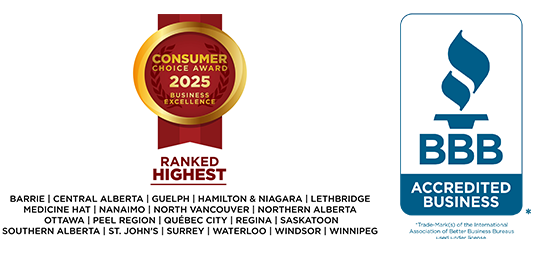MNP Consumer Debt Index confirms debt concerns in Atlantic Canada amid employment uncertainty
HALIFAX, NS – October 13, 2020 – As Atlantic Canada enters its seventh month of economic disruption, the pandemic is spotlighting issues for those dealing with job loss, debt, eviction, and food insecurity. The latest MNP Consumer Debt Index points to debt trouble in Atlantic Canada, particularly as payment deferrals and government emergency aid programs change or wind down.
Over half (51%, +4) of Atlantic Canadians say they’re $200 or less away from insolvency at month-end. One in five (21%) is technically insolvent, indicating they’re unable to cover their bills and debt repayments each month, a four-point jump since the last wave in June.
“This year has presented many challenges and the underlying issues people were struggling with before the pandemic are still present. As a result, many are in a position where they can’t deal with their debt anymore. These individuals need to know help is available,” says Joe Wilkie, a local Licensed Insolvency Trustee with MNP LTD in Halifax who offers customized guidance to help determine the best path forward for those struggling with debt.
There are signs more trouble could be on the horizon as bills quickly become due. Almost half of Atlantic Canadians (46%, unchanged) say they’re worried about their current level of debt, the highest proportion since 2017 (peaking at the same level in June 2020 and September 2019) and among the highest in the country. Whether one has a job or not, the fact remains one in three (33%, -15) Atlantic Canadians are still worried they or someone in their household could lose their job. Fewer than half (47%, -3) are confident they’ll have a debt-free retirement.
“Bankruptcy may be the best course of action for some, but that is also the last option after exhausting all others available. The earlier you get help, the more options there are to consider.”
Wilkie says depending on the extent of the debt and the individual’s income, dealing with debt problems may involve some combination of the following:
- Budgeting — Creating a monthly financial plan to help balance and monitor income and expenses, and potentially free up more cash to pay down debts.
- Refinancing — Re-negotiating the term and interest rate on existing credit accounts to reduce the monthly cost of debts and make them easier to repay.
- Liquidating — Selling high-value assets such as vehicles, recreational properties, sporting goods, and jewelry to provide the financing needed to pay down debt.
- Consolidating — Combining all debts into a single monthly payment with a lower average interest rate to reduce the number of payments and their total cost.
- Credit counselling — Working with a debt professional to negotiate a non-legally binding payment arrangement with creditors.
- Consumer Proposal — Working with a Licensed Insolvency Trustee to negotiate a legally binding debt settlement with creditors that will reduce the amount owing, and which can take up to five years to repay.
- Bankruptcy — A legal process that provides immediate protection to individuals experiencing financial trouble and can extinguish debts through a combination of asset liquidation and (potentially) monthly payments.
Bankruptcy may be the right option for those who have (1) had wages garnished, (2) are unable to make credit card and loan payments on time, (3) are receiving past due Notices or calls from debt collectors, or (4) who owe more money than the value of things they own.
“No debt situation is alike, which makes a consultation from a professional all the more important to ensure accurate, unbiased advice based on the situation,” says Wilkie.
Licensed Insolvency Trustees are the only federally regulated debt professionals who can provide expertise about all the debt relief options and ensure those struggling financially have access to the complete range of debt relief options available.
MNP LTD offers free consultations via videoconferencing and by phone. Visit MNPdebt.ca to book an appointment or to start a live chat.
About MNP LTD
MNP LTD, a division of the national accounting firm MNP LLP, is the largest insolvency practice in Canada. For more than 50 years, our experienced team of Licensed Insolvency Trustees and advisors have been working with individuals to help them recover from times of financial distress and regain control of their finances. With more than 230 offices from coast-to-coast, MNP helps thousands of Canadians each year who are struggling with an overwhelming amount of debt. Visit MNPdebt.ca to contact a Licensed Insolvency Trustee or use our free Do it Yourself (DIY) debt assessment tools.
About the MNP Consumer Debt Index
The MNP Consumer Debt Index measures Canadians’ attitudes toward their consumer debt and gauges their ability to pay their bills, endure unexpected expenses, and absorb interest-rate fluctuations without approaching insolvency. Conducted by Ipsos and updated quarterly, the Index is an industry-leading barometer of financial pressure or relief among Canadians. Now in its fourteenth wave, the Index currently stands at 94 points, the second-lowest reading ever, on the heels of having hit record-low in March of this year. Visit MNPdebt.ca/CDI to learn more.
The latest data, representing the fourteenth wave of the MNP Consumer Debt Index, was compiled by Ipsos on behalf of MNP LTD between September 1-3, 2020. For this survey, a sample of 2,001 Canadians aged 18 years and over was interviewed. Weighting was then employed to balance demographics to ensure that the sample’s composition reflects that of the adult population according to Census data and to provide results intended to approximate the sample universe. The precision of Ipsos online polls is measured using a credibility interval. In this case, the poll is accurate to within ±2.5 percentage points, 19 times out of 20, had all Canadian adults been polled. The credibility interval will be wider among subsets of the population. All sample surveys and polls may be subject to other sources of error, including, but not limited to, coverage error and measurement error.
A summary of some of the national data is available by request.


